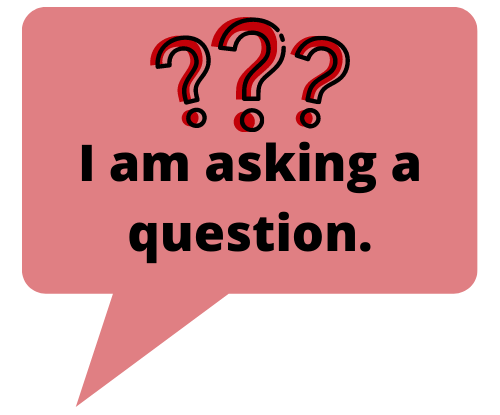Welcome back to Let's Talk AAC - a series of questions and topics for discussion. NWACS will occasionally post a question or topic with related information. Join in the conversation! Add your experiences, resources, related research, etc. in the comments so we can all learn and benefit from each other's knowledge and experience.
reading time: 3 minutes
Updated links on 2/16/24
Right #7 of the Communication Bill of Rights reads: The right to ask for and give information, including about changes in routine and environment.
In 1988, Dr. Janice Light identified four main purposes of communication:
expression of wants and needs
information transfer (to convey information to another person)
social closeness (to establish and maintain relationships with others)
social etiquette (to follow social conventions of politeness)
Many goals and interventions, and even AAC systems, focus on messages for basic wants and needs. Being able to communicate about our wants and needs is important, especially if we are dependent on others to get those wants/needs met. However, there is so much more an AAC user NEEDS to be able to communicate about! Teaching skills for the other three purposes of communication often are neglected or overlooked. Communication Right #7 addresses using communication for information transfer. This is a social communication skill.
The ability to ASK for information requires learning how to ask questions. Asking for information involves having access to and knowing how to use question words:
who
what
when
where
why
how
which
can I/you/we
could/would you
will you/we
The ability to GIVE information requires learning how to
relay information, such as
delivering messages
making announcements
telling home information
telling school/work/activity/event information
sharing opinions
report problems, such as
naming stressors
requesting help
reporting broken things
telling that something is not right
direct others, such as
finding or putting things
providing directions on how to do things
(this skill can lead to better personal care and the ability to direct caregivers)
tell personal narratives
telling about a recent/current event
telling about a future event
telling about a past event
express feelings
identifying emotions
labeling emotions
reasoning about emotions
Giving information involves letting communication partners know that you have something to tell them. It also requires having access to a wide variety of vocabulary, especially core words.
How do we promote this right?
For Communication Partners:
Make sure that everyone is aware of the Communication Bill of Rights.
Inform and train communication partners on how they can best communicate and interact with AAC users.
Model and scaffold language to ask and answer questions and for information transfer.
*scaffold means to break learning into chunks and provide support, tools, and structure as the AAC user learns and develops a new skill or concept
Provide explicit instruction to directly teach these skills.
The Rehearse, Practice, Model - GO! strategy from Dr. Caroline Musselwhite is one idea to help directly teach vocabulary and move toward generalizing the use of those words.
Be intentional and mindful about informing AAC users about changes in routine and environment. Allow time for the AAC user to ask questions to support their desired level of understanding.
Provide AAC Users:
Help people with disabilities understand their communication rights.
Provide culturally and linguistically responsive supports for AAC users to develop this skill area.
Provide AAC users with opportunities to ask and answer questions.
Provide AAC users with the relevant vocabulary for asking and answering questions.
Provide AAC users with opportunities to give information (relay information, report problems, direct others, tell personal narratives, etc.).
Ensure the AAC user has access to a robust vocabulary so that they can share information!
Encourage AAC users to self-advocate.
Your Perspective
What would you add? Join the conversation by commenting below! Share your thoughts, ideas, strategies, resources, and/or tips for supporting AAC users' ability to ask for and give information.
References and related resources:
Janice Light (1988) Interaction involving individuals using augmentative and alternative communication systems: State of the art and future directions, Augmentative and Alternative Communication, 4:2, 66-82, DOI: 10.1080/07434618812331274657
POWER:AAC Module 9: Use AAC in Class (addresses these four purposes of communication and how they are applied in the classroom)
Solomon-Rice, Patti & Soto, Gloria. (2011). Co-Construction as a Facilitative Factor in Supporting the Personal Narratives of Children Who Use Augmentative and Alternative Communication. Communication Disorders Quarterly. 32. 70. 10.1177/1525740109354776
Soto G, Solomon-Rice P, Caputo M. Enhancing the personal narrative skills of elementary school-aged students who use AAC: the effectiveness of personal narrative intervention. J Commun Disord. 2009 Jan-Feb;42(1):43-57. doi: 10.1016/j.jcomdis.2008.08.001. Epub 2008 Aug 27. PMID: 18838146.
Related posts:






